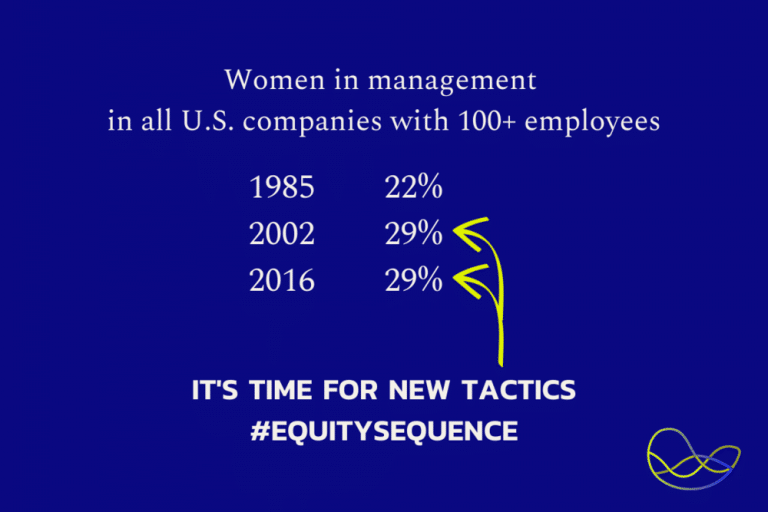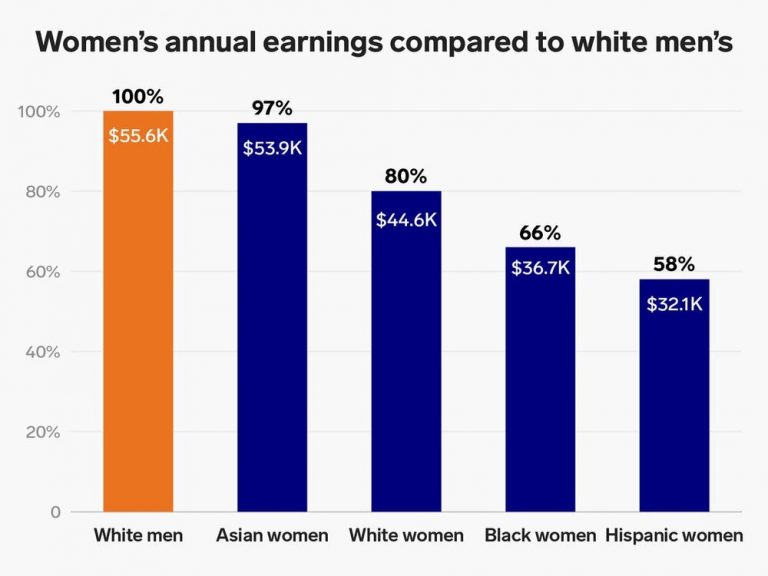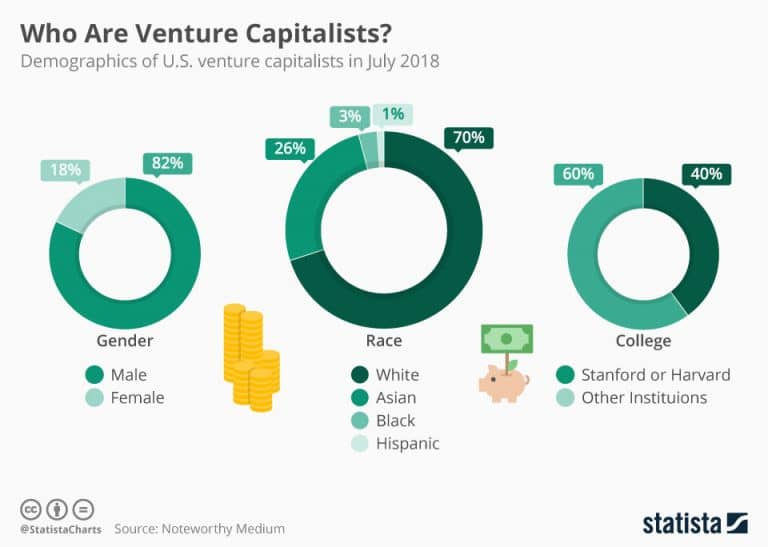Sandbox is incredibly excited to debut this guest blog post, written by Dr. Kristen Liesch, Co-CEO & Co-Founder of Tidal Equality. Dr. Liesch is a strategist and educator who empowers individuals and organizations to design equitable change in processes, products, services, and more, in radically simple and effective ways.
So, without further adieu, continue reading to find out more about what making ‘the business case’ for equity, diversity and inclusion looks like and why we need to stop making it.
Share on facebook
Share on linkedin
Share on whatsapp
Share on twitter
The birth of the business case
“We have the advantage of living by the side of, and in the midst of, the most progressive and highest type of white man that the world has seen.
Let us, then, use our strength in concentrated, organized directions, and in proportion as we do it, the white man will respect us.
Now is the time – not in some far-off future, but now is the time – for us as a race to prove to the world that in a state of freedom we have the ability and the inclination to do our part in owning, developing, manufacturing and trading in the natural resources of our country.”
Just like that, “the business case” for racial diversity and inclusion was preached from a stage at a conference in Chicago, Illinois.
It was delivered carefully, thoughtfully, and with a vision full of hope for an equal future by a Black man who knew, he knew, that his country’s economy had prospered for generations on the backs of his peers and their forbearers. And he knew that they could – in their freedom – see it prosper to an even greater extent with their liberty – with their full and equal participation. And he believed that all it would take for his white fellow citizens to embrace that full and equal participation was evidence. Evidence that equality was worthwhile. Was of value. To the bottom line.
On August 21, 1912, in his address before the National Negro Business League in Chicago, Booker T. Washington argued for proving the business case.
Time for a mic drop?
Today, on May 11, 2020, the business case has been made. It has been made again and again and again. Over decades. With thousands of data sets, hundreds of metrics, over regions, within sectors and industries. In regards to race. In regards to gender. In regards to (dis)ability. In regards to sexuality and gender identity and age and neurodiversity and class and on and on and on.
The business case for equality of opportunity has been made. We should be able to turn the page. And yet…
“Can you help me make the business case?” is a question that many equity, diversity and inclusion practitioners hear from people working inside organizations. People who care about inequity. People who observe discrimination. People who experience harassment and prejudice and stereotyping. People who want to see those things change. Who just want to be able to come to work, for their peers to come to work, and achieve their full potential. That’s it. To be able to do their best work, to the best of their ability, and be recognized accordingly, without racism/sexism/ageism/homophobia/xenophobia/ableism/ism/ism/ism getting in the way.
“Can you help me make the business case?” Because aren’t business decisions made to improve the bottom line? Because certainly our CEO – let’s call him John – will do something about our biased hiring processes / unfair promotion practices / racist team leader / sexist project manager if only I can explain to him that diverse, inclusive and equitable organizations make. More. Money.
Because, after all, they do.
And we know they do.
The writing has been on the wall, in the report, in the journal article, in the newspaper, in the textbook, for a long, long time, now.
And yet! Women’s representation in corporate leadership has stalled.
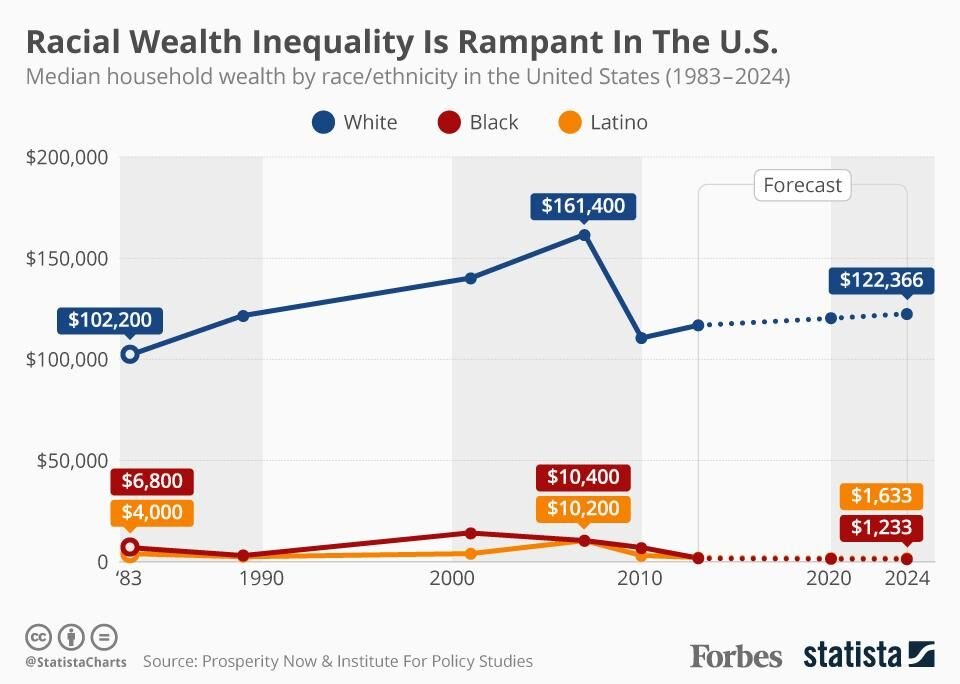
Racial wealth disparities are widening.
Wage gaps persist between men and women, then between women along racial lines.
Investment in ventures founded by women and other marginalized groups remains incomprehensibly low.
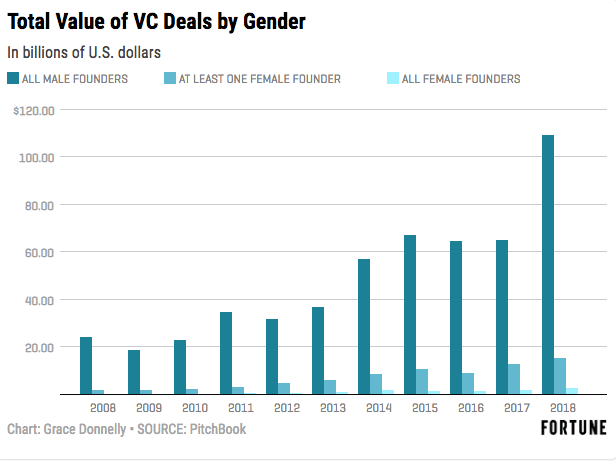
Why the cognitive dissonance?
So. Why is it that John the CEO – who knows about the business case, has heard it and read it, and maybe even approved a social post on his behalf that celebrates the business contributions of the women, the people of colour and other underrepresented people in his company – isn’t chomping at the bit to grow the most equitable organization he can?
Well, in my limited experience, I’ve come across a few excuses, er… explanations.
DID YOU KNOW THAT FEMALE FOUNDED VENTURES RETURN (SIGNIFICANTLY) MORE ON INVESTMENT?
Once, the CEO at one country’s biggest incubators told me “Hi Kristen. A founder’s job is to win. When they bring in other people’s money it amplifies the pressure. What they do, how they do it, is up to that team. It makes 100% sense to have diverse teams but they and we don’t have time to work on this.” And, one of my favorites: Sarah LaFleur was told by a VC that the market for her startup was “niche.” Her market was working women.
DID YOU KNOW THAT “THE MORE DIVERSE A FILM IS, THE MORE MONEY IT MAKES FULL STOP”?
Actor, Producer and Activist Jesse Williams makes this assertion to contrast the fact that, as his colleague, Director,Writer, Actor and Producer Reggie Rock Blythewood notes “From a black point of view, a lot of our passion projects have not yet gotten made, because we are told that the subject matter won’t travel.” [See S1E3, They’ve Gotta Have Us on Netflix.]
DID YOU KNOW THAT OF COMPANIES LISTED IN THE RUSSELL 3000 INDEX, MEN CEOS OUTNUMBER WOMEN TO A RATIO OF 19:1, BUT THAT THESE WOMEN OUTPERFORMED THEIR MALE COUNTERPARTS IN VALUE APPRECIATION AND IMPROVED STOCK PRICE MOMENTUM?
And yet, there are more CEOs named John than all female CEOs put together. And what are women in pursuit of leadership told? You need mentorship. You need sponsorship. A few more years experience. To be more assertive but not too assertive. To stand tall but don’t be intimidating. Maybe a few more self-help books and a nice inspirational pastel pantsuit brunch (one of my faves), and a pat on the head, to-boot – a mallet, maybe, in case the pat doesn’t get the message across.
So, if all it took was the business case. If leaders make their decisions based on ROI and fiduciary responsibility and market value and all the rest of it, why isn’t John the CEO and all the other “John-the-CEOs” pounding their fist on the table and declaring: “If we don’t have 50/50 gender representation across the ranks of our organization… if we don’t hire and promote all people – regardless of race, gender, etc. – at equal rates… if we don’t create a culture of anti-sexism, anti-racism and so-on… Then people at this company don’t have an equal opportunity to succeed and achieve their full potential. Then – godammit – neither can this company! And that’s not okay!”
Why don’t they? Because…
Brace yourself… I would argue, they are not the “most progressive and highest type” of people the world has seen. And by that, I mean, they are just, well, human and absolutely subject to the same cognitive pitfalls as any other human.
One particular phenomenon that aptly describes why it is that leaders would knowingly forego the collective (and personal) benefits is what’s called “in-group bias.” In-group bias is defined as “those instances of favouritism which are unfair or unjustifible in the sense that they go beyond the objective requirements or evidence of the situation.”
Henri Tajfel is a psychologist renowned for his work on social identity theory and the cognitive aspects of prejudice and discriminatory behaviour. His work reveals that “under certain circumstances, the mere perception of belonging to one of two distinct groups is sufficient for ingroup bias in the distribution of monetary rewards.”
In “Social comparison and group interest in ingroup favouritism,” Tajfel et al conclude that, “to a surprising degree, subjects do sacrifice absolute levels of group and personal gain to achieve intergroup differences in outcomes favouring the ingroup.”
Queen’s University Assistant Professor David J Hauser illustrates the phenomenon with a quick poll of his class.
First, he asks them a question like: “Is a hotdog a sandwich?” so they self-select into two groups: the yes-a-hotdog-is-a-sandwich group, and the no-a-hotdog-isn’t-a-sandwich group. Second, he gives them two reward options to choose from:
-
Give $3 to everyone who agrees with me, and $4 to everyone who disagrees with me
-
Give $2 to everyone who agrees with me, and $1 to everyone who disagrees with me
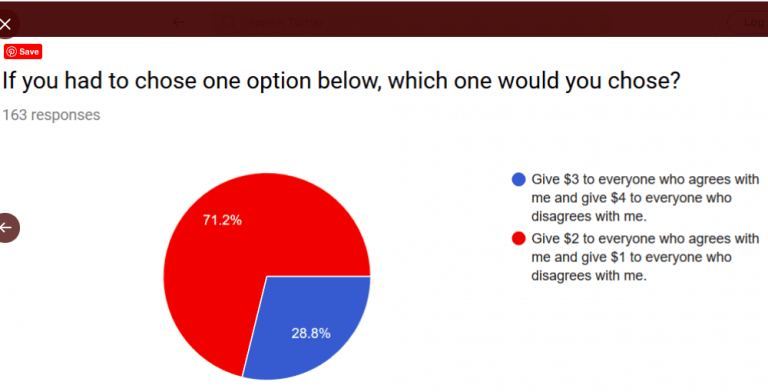
You can see that an individual would rather disadvantage themselves and those like them before they’d see the out-group enjoy a disproportionate advantage.
So what does this mean? It means that CEOs named John (yes, I continue to use this as short-hand for what is elsewhere referred to as ‘traditional leaders’ or ‘stereotypical leaders’) are inclined to sacrifice the benefits associated with cultivating and supporting leaders who are different from them because of an implicit concept that doing so disadvantages their own group.
Where white male CEOs (averaging 6’ in height, 2.5” taller than the average American male) are the “in-group”, and everyone else is the out-group, they’re more likely to endorse the promotion of in-group members even when a diverse leadership team is more likely to generate greater positive results.
Where the majority of VCs are white and male, they’re more likely to invest in ventures led by in-group members even with the knowledge that female-founded ventures show greater ROI.
STay up to date on the changing face of business
So… why is fixing this such a big challenge?
THE SUSTAINERS OF THE STATUS QUO SOUND PRETTY WOKE TODAY
We might find it laughable that Booker T. Washington thought the American white (man) of the early 20th century was the “most progressive and highest type of white man the world has seen.” That was before Jim Crow, before the Civil Rights movement, almost a century before his country would see a black man in the highest office. But the fact of the matter is, in years gone by, racism, sexism, homophobia and other forms of discrimination and prejudice have been, broadly speaking, more salient. And with that salience came a “problem of discrimination” that had a relatively distinct form and shape and tone. As Destiny Ekaragha says of more explicit forms of racism, “You can fight what you can see.”
Today, explicit perceptions of marginalized groups are shifting, particularly in relation to LGBTQ-, race- and gender-bias. And recent promising research shows that even implicit biases are shifting in this direction (although biases are deepening in regards to dimensions including age, ability and body type). However, as our social dialogue shifts toward greater inclusivity and equity, it is easier than it has ever been to participate in that dialogue without necessarily acting in alignment. Which segues the conversation to the next aspect of our challenge…
THE WINDOW DRESSING IS PRETTY CONVINCING (AND CHEAP)
Many-a-leader can be quoted singing the praises of equity, diversity and inclusion, and pointing to their related outputs. What do I mean? How many times have you read a LinkedIn post along the lines of, “I’m so proud to announce that we’ve increased the representation of women in management at our company to 50% as a result of our concerted efforts to create equal opportunities for success and reduce systemic barriers to underrepresented groups.” Find me one and I will celebrate it. Please take me up on this. But how many times have you read a LinkedIn post along the lines of, “I’m so honoured to be celebrating members of our Women In network at this year’s International Women’s Day brunch where we will be matching 100 high-potential women with mentors as part of our Mentorship for Leadership Development program.” The fact is, you might have the impression that, for example, women are advancing in greater numbers into positions of leadership, but the reality is the proportion of women managers hasn’t increased meaningfully in decades.
“But,” you might say, “what about all those announcements I see in the media and on LinkedIn showing women appointed to positions of leadership? What about all the panels where women share their secrets for success? What about the org sponsored events and conferences?” Simply put, organizations cull more social favour and capital for that kind of PR (which is why you’re not inundated with an announcement every time a “John” or “Dave” gets a promotion.)
WE’VE BEEN RAISED ON THE BOOTSTRAPPING NARRATIVE
Another factor preventing broader progress toward equality is the narrative we’ve been inundated with and many of us believe. It tells you that if you curb the negative self-talk, lean in, lean in further, walk taller, dress this way, not that way, straighten your hair if it’s frizzy, curl your hair if its limp, smile, but not too big, be assertive, but not bossy, share that idea with confidence, but not too much, that the only thing stopping you from achieving your dreams is you, bla bla bla. It’s the stuff of movies and self-help books and listicles galore, it’s the foundation of women’s networks and retreats. Now, don’t get me wrong, I applaud anyone who’s inclined to journey toward greater self-knowledge. But that won’t hold a candle to systems rife with bias – everything from college recruitment, hiring and promotion, and on and on. Besides just convincing us that we’re the problem, this narrative prevents us from raising our hands and saying, “I’m not sure I’m the problem, here.”
How do we change the system?
You might be thinking, “Well, shiiiiiiiiit, Kristen, how do we turn this ship around?”
Here are two ideas. Both are revolutionary. And, for the record, I didn’t come up with either of them!
1. Raise Consciousness
In other words, share your lived experience! When a 30-something VP returning to her role after parental leave only to find she’s been demoted shares this experience with a friend in another city who has been passed over for a promotion in favour of her male peer because she’s “got competing priorities” aka children, they each realize that their situation is not unique. It is not just their story.
The social movements of the past century share this in common: they gained momentum and supporters and champions by way of conversations. Frank conversations. About lived experiences and observations of inequity and inequality.
Kathie Sarachild, a leader of the Women’s Liberation Movement writes that “there turned out to be tremendous resistance to women’s simply studying their situation…the topics we were talking about in our groups were dismissed as ‘petty’ or ‘not political.’ Often these were the key areas in terms of how women are oppressed as a particular group–like housework, childcare, and sex….Some people said outright they thought what we were doing was dangerous. When we merely brought up concrete examples in our lives of discrimination against women, or exploitation of women, we were accused of ‘man-hating’ or ‘sour grapes.’” The women’s rights movement borrowed this tactic from the civil rights movement, however, where the grassroots initiative that culminated in reform started with mass meetings designed to “promote community and break down any feelings of isolation that formerly experienced by the African-Americans in attendance. Julie A. Clements writes that “at weekly mass meetings, local members of Civil Rights groups would take turns sharing personal stories of the injustices they had endured from whites. This politicization of personal problems linked Civil Rights participants together in a mission to transform their personal injustices into healthy political reforms.”
So, grab a glass of wine or a cup of tea and talk with someone who might care about the inequities you experience or observe. Talking about lived experiences of inequality is the first step toward understanding those experiences, and when we understand the symptoms, we are better equipped to get to the root.
2. “Double-cross the Establishment”
Audre Lorde famously wrote that “the master’s tools will never dismantle the master’s house,” and she’s right. We will never create more equitable systems and processes by using yesterday’s (inequitable) tactics.
But what if you work in the master’s house? What do you do then? What if you feel too small to make a difference? Too powerless or status-less to effect change?
Adam Grant, in his book Originals writes about a person without status who was nevertheless trying to influence others. Grant writes, “she didn’t put her career on the line by attempting to attack the system from below. Instead, she aimed to earn status by becoming part of the system and then changing it from within.”
Grant quotes filmmaker Francis Ford Coppola, who observed, “The way to come to power is not always to merely challenge the Establishment, but first make a place in it and then challenge and double-cross the Establishment.”
The fact is, you and I and everyone… we live our daily lives – we make decisions, we make choices, we take action – in particular ways.
Within particular constraints.
We operate inside complex, overlapping, interacting systems. Sometimes those systems seem so big and immovable, so static. We might sometimes feel helpless and hopeless.
But what if I told you you could become a bug in that system?
If you prefer the metaphor of a cog in a wheel… what if I told you you could change your shape, oh cog, and start messing with the wheel? Because you can!
You can change how you buy, how you build, how you plan, how you communicate, how you test and evaluate, how you design and ship and create and pitch and fund… Because you can take everyday decisions and pause and ask yourself, “Is there a way I could make this more equitable? Is there a way for this to be more inclusive?”
Now is the time.
Not in some far-off future, but now is the time!
ABOUT THE AUTHOR:
Dr. Kristen Liesch has been named a Forbes D&I Trailblazer, and is a strategist and educator who empowers individuals and organizations to design equitable change in processes, products, services, and more, in radically simple and effective ways. Co-CEO and co-Founder of Tidal Equality, Kristen is also the co-creator of the Equity Sequence™️ – a powerful practice made up of 5 equity-focused strategic questions – that continues to equip people around the world to make equitable change wherever they work, learn, and play. Read more courageous content at Tidal Equality.
Sandbox Centre, and Partners that are committed to making change, excitedly invite you to join the Equity SequenceTM Program. Become equipped with the framework and tool that can be used in every day life, work, and any key decision to reduce bias, make it more inclusive, and equitable.

